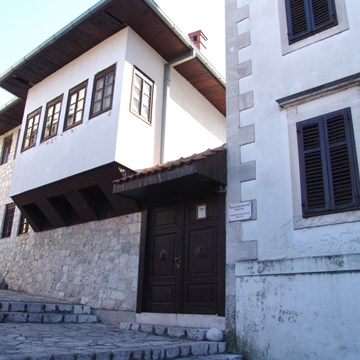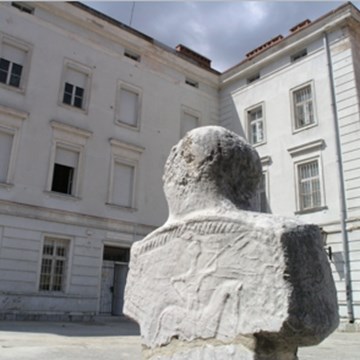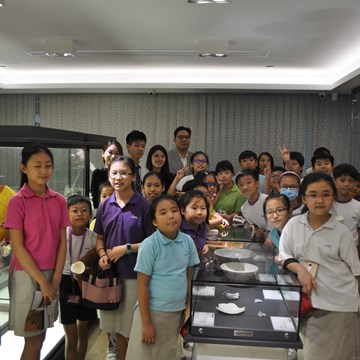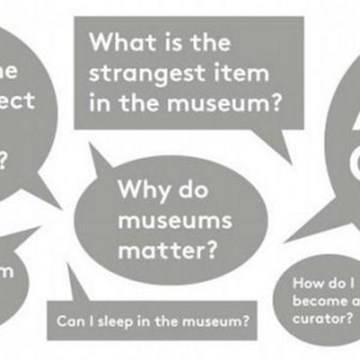Azerbaijan National Museum of Art
Reflecting all the types of art museum represents art of Azerbaijan, West Europe, Russia
and the East (Iran, Afghanistan, Turkey, Japan, China, India, Egypt, Central Asia).
Collection of Azerbaijani art includes fine art works reflecting stages of art development
from ancient times till modern times. Collection of art includes fine art works reflecting
historically stages of art development from ancient times till modern times.
Represented on the first floor West European museum collection includes
representatives of art schools of Italy, Flanders, Holland, Germany and France Raffaello
Sanzio, Leandro Bassano, Giovanni Francesco Barbieri, Francesco Solimena, Adriaen
Brouwer, Justus Sustermans, Pieter Claesz, Michiel Janszoon van Mierevelt, Johann
Heinrich Roos, Friedrich August von Kaulbach, Meyer von Bremen, Gaspard Dughet,
Jules Dupré, Pascal-Adolphe- Jean Dagnan-Bouveret, Jean-Joseph Benjamin-Constant,
Jean Daullé, Georg Wille, Jacques Callot, Robert Gaillard, Friedrich Schmidt and other
famous painters and graphic artists of XVI-XIX centuries.
Russian museum collection on the same floor is represented by the works of
famous artists and sculptors of XVIII-XX centuries - Vladimir Lukich Borovikovsky, Nikolai
Argunov, Karl Briullov, Vasily Tropinin, Konstantin Makovsky and Vladimir Makovsky,
Ivan Shishkin, Fyodor Vasilyev, Vasili Pukirev, Ivan Aivazovsky, Vasily Vereshchagin,
Konstantin Korovin, Yevgeny Lansere, Alexander Opekushin, Felix Khodorovich and
other works.
Collection of Azerbaijani art represented on the second floor includes fine art
works reflecting stages of art development from ancient times till modern times. Found
during archeological excavations in Mingachevir,Sheki, Fuzuli, Nakhchivan and Goy-gol
ceramic ware decorated with very archaic ornamentation and antique clay statuettes,
decorative lamps, ceramic tiles of the Seljuq period, parts of the friezes from the
13th century Bayil castle, fine manuscript books of the 16th century; original Tabriz
miniatures in tempera, gold water and watercolour from the 17th-18th century; artistic
metal items from the 16th and 17th centuries, works by the artists of Qajar style and the
well-known artists of the 19th century Mir Mohsun Navvab, Mirza Qadim Irevani, Abbas
Huseyni, Akbar Shargizad Tabrizi; incomparable carpets woven in such carpet centers as
Guba,Tabriz, Garabagh, Baku, Shirvan, Ganja, Gazakh, original silk and woolen fabric,
art embroidery– gulabatin(gold embroidery), takalduz (chain stitch embroidery), spangled
embroidery and julma; national costumes and jewellery from the 18th-20th centuries are
exhibited here.
On the third floor are held international and Republican exhibitions and also
represented works by well-known modern artists, graphic artists and sculptors of
Azerbaijan – Bahruz Kangarli, Azim Azimzadeh, Salam Salamzadeh, Reyhan
Topchubashova, Taghi Taghiyev, Mikayil Abdullayev, Vajiha Samadova, Ogtay
Sadiqzadeh, Boyukagha Mirzazadeh, Toghrul Sadiqzadeh, Maral Rahmanzadeh, Elmira
Shahtakhtinskaya , Tahir Salahov, Fuad Abdurrahmanov, Jalal Garyaghdi, Omar Eldarov
and others.
The Azerbaijan National Art Museum is one of the influential museums on world
scale which has a rich collection. In the museum are often held international exhibitions
devoted to national art of Turkey, Iran, France, Japan, China and Central Asia.
Organized scientific lectures, excursions, programmes for families, children and youth,
circles, master classes, round tables and discussions are interesting regardless of age
and national origin.
The Azerbaijan National Art Museum is a treasure house that preserves our
national values and universal cultural heritage.There are kept more than 18,000
monuments of art in the museum which has a rich history.In 1924 it was founded as art
department under Azerbaijan State Museum.In 1936 according to resolution of Council of
Peoples Commissars the art department was separated from the Azerbaijan State
Museum and organized as an independent museum.In 1937 the opening ceremony of
the museum’s first exposition took place.In 1951 museum was moved to the building
which was built in baroque style in 1887-1895 years according to the project of chief city
engineer Nikolay Avgustovich fon der Nonne. In 1992 built in 1883-1887 years according
to the project of engineer M. D. Botov the building of Marian Girls' Gymnasium was given
for use to the museum. In 2013 intermediate building in contemporary style that merged
architectural buildings of XIX century in the form of united complex was given for use to
the museum.In 2011 according to the State resolution museum got national status, also
in the same year the museum was declared to be of first National and then European
Museum Standard (EUMS), meeting international standards and criteria, as appropriate
for a museum and implying high quality museum services and professional experience;
this was made by unanimous decision of the Council of Directors of the European
Economic Chamber of Trade, Commerce and Industry – EEIG - located in Brussels.
Exhibitions and events
We don't have anything to show you here.
Educational programs
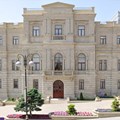
Team building
Workshop
Collections
We don't have anything to show you here.
Articles
National art of Lahij in the list of non-material cultural heritage of UNESCO
Azerbaijan art is known by many spheres of art made a contribution to world culture. Undoubtedly, metalwork also plays its role among these kinds of...













